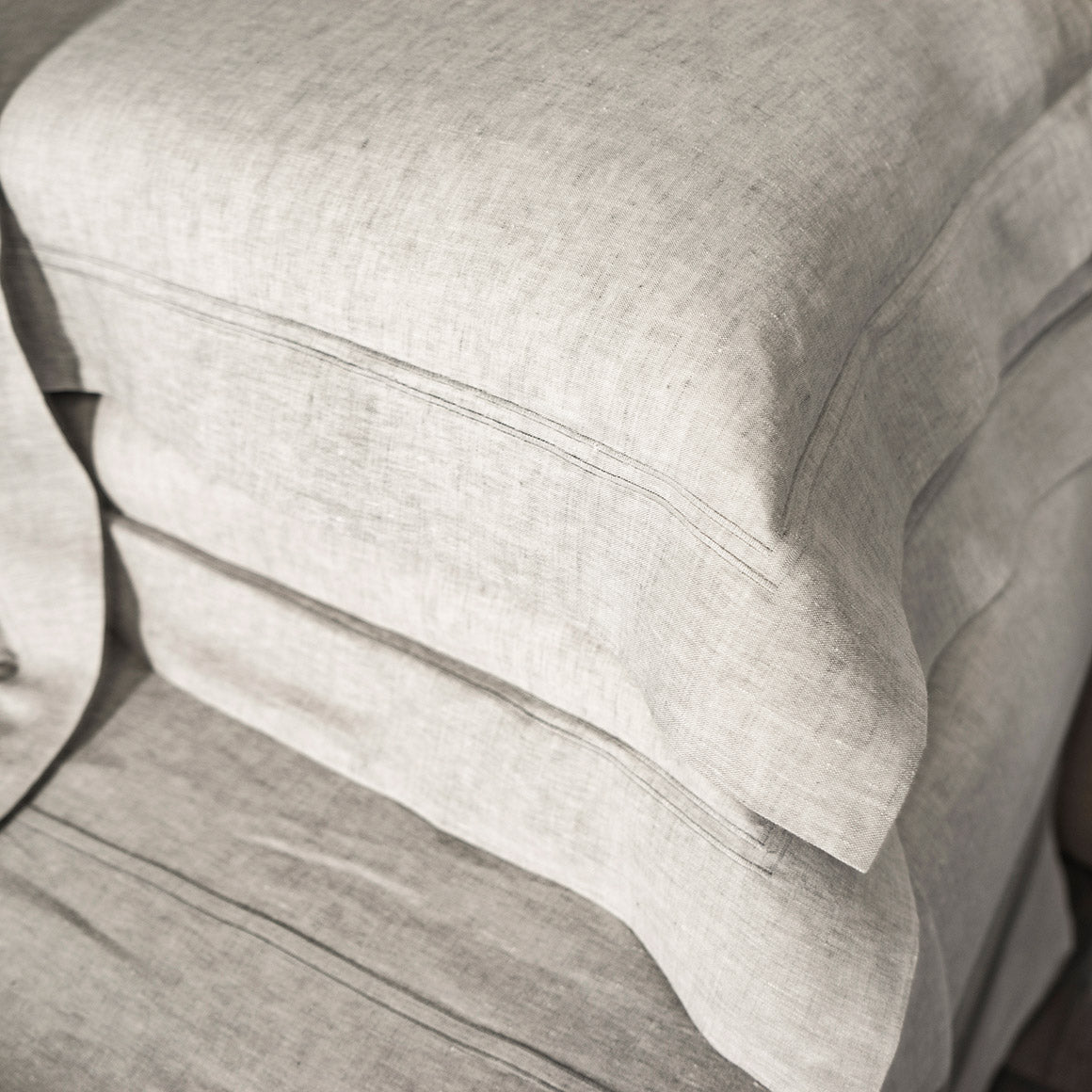
How linen may soothe your conscience as well as your sleep
Share
Flax fibres found in a prehistoric cave in Georgia suggest linen could have been around for more than 30,000 years. Linen was also used in ancient Egypt, where it was valued as both currency and part of the mummifying process because of its durability (Linen was seen as a symbol of light, purity and, yes, wealth). It’s even mentioned in the Bible (Proverbs 31).
As Polite Society owner Scott Cooke says: “Linen is as old as the hills and has accompanied mankind’s journey since the beginning of time.”
But there’s more to linen than mere historical wonder. In fact, you could say it’s the fabric of the future as well.
“Linen is also one of the most sustainable and ecologically sound fabrics around, as well as being completely natural,” adds Scott.
So what is linen exactly?
Linen is made from the cellulose fibres that grow inside the stalks of the flax plant (or Linum usitatissimum to use its botanical name). It’s an annual plant – meaning it only lives for one growing season – with delicate blue petals. From seed planting, flax is ready to be harvested when the stem turns yellow (around 100 days).
One of the great advantages of flax is that it can grow in poor soils with minimal water, pesticides and fertilisers. “It also requires far less water than other fibres,” says Scott.
In fact, according to the European Confederation of Linen and Hemp, “Across its life cycle, a linen shirt uses 6.4 litres of water”, compared to thousands of litres for other common fabrics.
Flax is also extremely versatile, with minimal waste. A common by-product is linseed oil, used for wood preservation, and edible flaxseed oil, which is rich in omega-3. Flax is also a break crop, meaning it can improve overall soil quality (pretty incredible, given the global problem of soil depletion).
How is linen made?
After harvest, the flax stalks are dried in the open air before they undergo threshing to remove the seeds. Flax fibre is then extracted from beneath the surface of the stem.
“The fibres are then graded, with the longest ones making the finest-quality linen yarn, which is used to weave into fabric,” says Scott. “The shorter ‘tow’ fibres can be spun into a coarse yarn, from which lower-quality linen products can be made.”
Incidentally, the highest-quality linen fabrics are made from flax plants that are pulled out of the earth by hand. This is so the root system is left intact (machine harvesting is unable to do this), increasing the length of the fibre produced.
“The finest producers of linen are France and Belgium, but it’s produced in relatively small quantities so it’s more expensive,” explains Scott. “But linen bed linen is luxurious and long-lasting; its durability is why it used to be passed down from mother to daughter.”
Other reasons to love linen
Flax absorbs large amounts of carbon dioxide (the greenhouse gas that is accelerating climate change by raising global temperatures). With help from the sun, one hectare of flax absorbs 3.7 metric tons of CO2. Linen is also 100 per cent biodegradable.
“The thing I also love about linen is that it’s a breathable fabric, which allows heat and moisture to escape from the body, rather than trapping it next to the skin,” says Scott. “This is why linen sheets are perfect for our hot Australian summers.”
Given its many attributes, you may wonder why everyone doesn’t switch to linen. Cost is one factor – it’s definitely an investment purchase but one that will last a long time – as is availability.
Scott also says that not everyone likes the feel of linen (although it does soften with time) and the fact that it creases so easily. “But I think that just adds to its relaxed, informal appeal for today’s lifestyle,” he says.
“It’s not necessarily for everyone. But for others, once they understand linen and its qualities, they won’t use anything else!”







